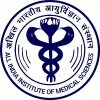Research Scientist 1
10+ Research Scientist 1 Interview Questions and Answers

Asked in Hetero

Q. How would you determine the solubility for dissolution and sink conditions?
Solubility for dissolution and sink condition can be determined by conducting solubility studies and using appropriate sink conditions.
Conduct solubility studies using various solvents and methods such as shake-flask method or UV spectroscopy.
Ensure sink conditions are maintained by using a large volume of dissolution medium compared to the amount of drug being dissolved.
Monitor the concentration of the drug over time to determine the solubility profile.
Calculate the solubili...read more

Asked in Hetero

Q. What is the procedure for the development of Assay, Dissolution, and Related Substances?
The procedure for developing assays, dissolution, and related substances involves method validation and optimization for accurate results.
Define the purpose of the assay, such as quantifying active ingredients.
Select appropriate analytical techniques (e.g., HPLC, UV-Vis spectroscopy).
Develop a dissolution method that mimics physiological conditions.
Establish criteria for related substances, including limits and detection methods.
Validate the method for specificity, accuracy, ...read more
Research Scientist 1 Interview Questions and Answers for Freshers

Asked in Dabur Research Foundation

Q. What is the difference between plant cell culture and animal cell culture?
Plant cell culture involves growing plant cells in a controlled environment, while animal cell culture involves growing animal cells.
Plant cell culture is typically done in a solid or liquid medium containing nutrients and growth hormones.
Animal cell culture is often done in a similar medium, but may require additional factors such as specific growth factors or hormones.
Plant cells have a rigid cell wall, while animal cells do not.
Plant cell culture is commonly used for study...read more

Q. Reporting about Molecular and serological testings of viral samples
Discussing the reporting of molecular and serological testing of viral samples in research
Molecular testing involves detecting the genetic material of the virus, such as PCR tests
Serological testing looks for antibodies produced by the body in response to the virus
Reporting should include details on the methods used, results obtained, and interpretation of findings
Examples of molecular tests include RT-PCR and sequencing
Examples of serological tests include ELISA and Western ...read more

Asked in Cliantha Research

Q. What are the first steps you would take in method development?
Initial steps in method development involve defining objectives, reviewing literature, and designing experiments.
Define the research objectives clearly, e.g., determining the efficacy of a new drug.
Conduct a thorough literature review to understand existing methods and gaps.
Identify the appropriate techniques and tools needed for the method, such as chromatography or spectroscopy.
Design preliminary experiments to test hypotheses, ensuring to include controls.
Establish a timel...read more
Asked in Stabilitas Solvents And Chemicals

Q. How do you synthesize different types of APIs?
Different types of APIs can be synthesized through various chemical reactions and processes.
Identify the desired API structure and functional groups
Select appropriate starting materials and reagents
Plan and execute synthesis route using suitable reactions such as condensation, reduction, oxidation, etc.
Purify and characterize the synthesized API through techniques like chromatography, spectroscopy, and crystallography

Asked in Dabur Research Foundation

Q. Which dye is used in staining?
Hematoxylin and eosin (H&E) dye is commonly used in staining for histology and pathology purposes.
Hematoxylin is a basic dye that stains nuclei blue-purple.
Eosin is an acidic dye that stains cytoplasm and extracellular matrix pink or red.
H&E staining is widely used in histology to visualize tissue structures and abnormalities.

Q. Serological testings of viral samples
Serological testing of viral samples involves detecting antibodies produced by the immune system in response to a viral infection.
Serological testing is used to determine if a person has been exposed to a specific virus.
It can also help in identifying past infections and immunity levels.
Examples of serological tests include ELISA, Western blot, and rapid antibody tests.
Share interview questions and help millions of jobseekers 🌟


Asked in Hetero

Q. What is the calibration procedure for HPLC?
Calibration procedure of HPLC involves preparing standard solutions, injecting them into the system, and plotting a calibration curve.
Prepare standard solutions of known concentration
Inject the solutions into the HPLC system
Plot a calibration curve using the peak areas or heights
Determine the equation of the line of best fit
Use the equation to calculate the concentration of unknown samples

Asked in Dabur Research Foundation

Q. What is cell culture?
Cell culture is the process of growing cells outside of their natural environment in a controlled setting.
Cells are typically grown in a sterile environment with specific nutrients and conditions to support their growth
Cell culture is commonly used in research to study cell behavior, drug testing, and disease modeling
Examples of cell culture techniques include adherent cell culture, suspension cell culture, and primary cell culture

Q. RTPCR of SARS CoV-2
RT-PCR is a molecular technique used to detect the presence of SARS-CoV-2 virus in a sample.
RT-PCR stands for reverse transcription polymerase chain reaction
It is used to amplify and detect specific RNA sequences, such as those from SARS-CoV-2
RT-PCR is a sensitive and specific method for diagnosing viral infections
Results are typically reported as positive or negative for the virus
Example: RT-PCR testing is commonly used for diagnosing COVID-19
Interview Questions of Similar Designations
Interview Experiences of Popular Companies








Reviews
Interviews
Salaries
Users

















